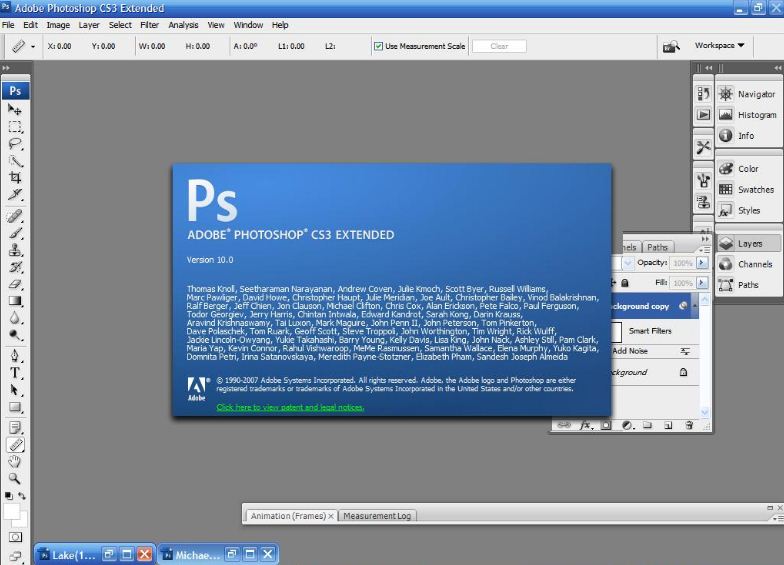

Better still, you can change filter settings at will, and you can even reorganize the order in which the filters are applied, by changing their position in the Layers panel. Select a layer and choose the Filter: Convert For Smart Filters command, and Photoshop converts the layer to a smart object that you can apply filters to. In Photoshop CS3, you can, for the first time, apply image filters nondestructively.

With each new version, Photoshop becomes less destructive-it gains new features that enable you to alter images without changing their original pixel data. Here, a spot in the lower right corner of the image is being cleaned up. Camera Raw 4’s Retouch Tool lets you clean up sensor dust. On his must-read blog, Photoshop product manager John Nack has published some interesting thoughts about this.

This has some interesting workflow advantages-for example, a news or sports photographer can use it to apply nondestructive edits and submit them, along with the original JPEGs, to a waiting photo editor. It’s also worth noting that you can now open JPEG and TIFF images in the Camera Raw window and apply nondestructive edits to them. The Camera Raw window even has a new Retouch tool that lets you do rudimentary cloning and dust-spot removal-great for getting rid of sensor dust spots that appear in every frame of a shoot. Camera Raw 4 sports a large array of new image-processing capabilities, including superb monochrome conversion and new controls for lighting, tonality curves, and color. Like Adobe’s Photoshop Lightroom ( ), Photoshop CS3 includes Camera Raw 4, the latest version of what many people regard as the best raw-image processor available. As for the Channel Mixer, it has also been improved and now offers its own black-and-white conversion presets. The Black & White dialog box sports presets that simulate numerous film filters there’s even a preset that simulates infrared film, though it often blows out image highlights. The new Black & White command makes the process much easier. Photoshop users have long relied on features such as the Channel Mixer to control the conversion of color images to black-and-white.
#CS3 PHOTOSHOP FOR MAC PROFESSIONAL#
Exactly what will that phrase mean to a professional photographer who’s only now making the move to digital? (It certainly doesn’t provide any warning that it’s a substandard way to adjust brightness/contrast.) I wouldn’t trade Photoshop’s power for simplicity, but I do think that Adobe could make Photoshop more approachable. For example, Photoshop’s Brightness/Contrast command is greatly improved in CS3, but Adobe hides access to the old-style Brightness/Contrast adjustment command behind an option called Use Legacy. The little smatterings of engineer-speak that you find here and there don’t help. Replacing the old Print With Preview dialog box, it provides a larger image preview that’s color-managed, reflecting changes when you choose different rendering settings and printer profiles.ĭespite these interface improvements, Photoshop remains a daunting program for imaging newcomers. (The new Black & White dialog box does, too.) And the Print dialog box has been completely remodeled. Photoshop CS3’s Channel Mixer and Curves dialog boxes now let you save and recall presets. The new Black & White adjustment command lets you control how an image’s colors are converted to grays by clicking and dragging directly on the image instead of futzing with dialog-box sliders. Photoshop CS3’s new Clone Source panel appears at the right edge of this screen its dock is collapsed to icon view.Other usability improvements abound throughout Photoshop CS3. The new Black & White dialog box provides several presets that simulate various film filters-even infrared.


 0 kommentar(er)
0 kommentar(er)
